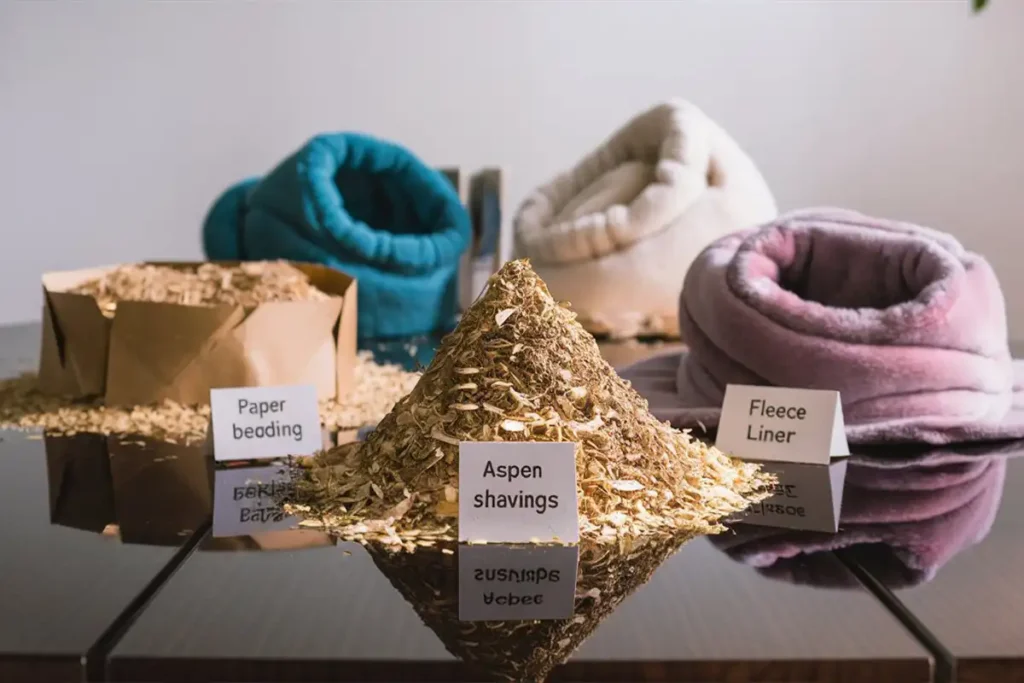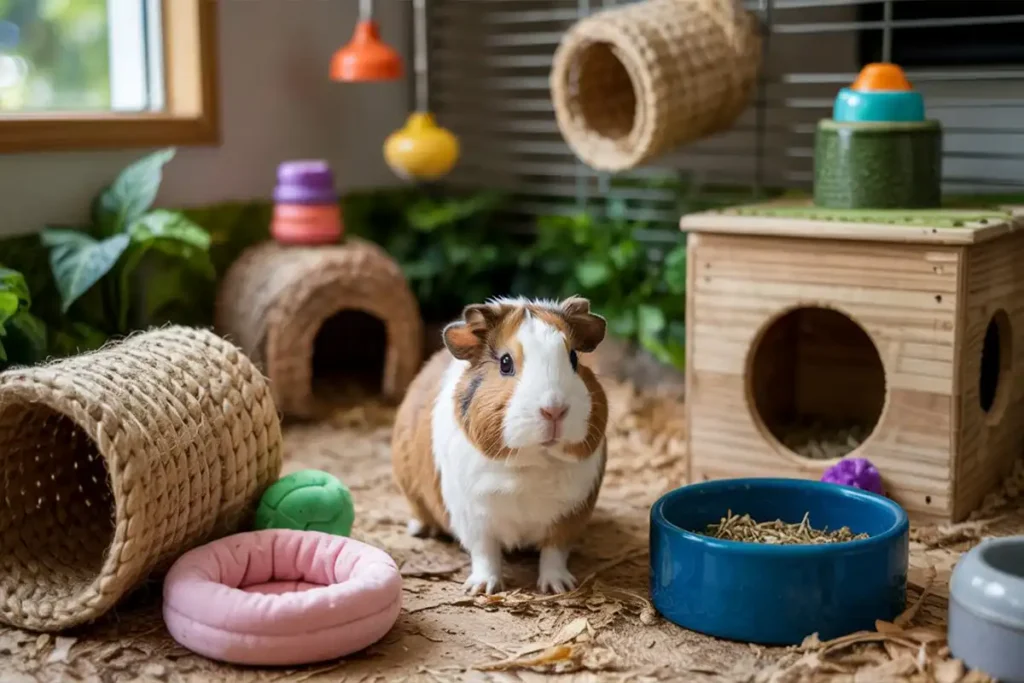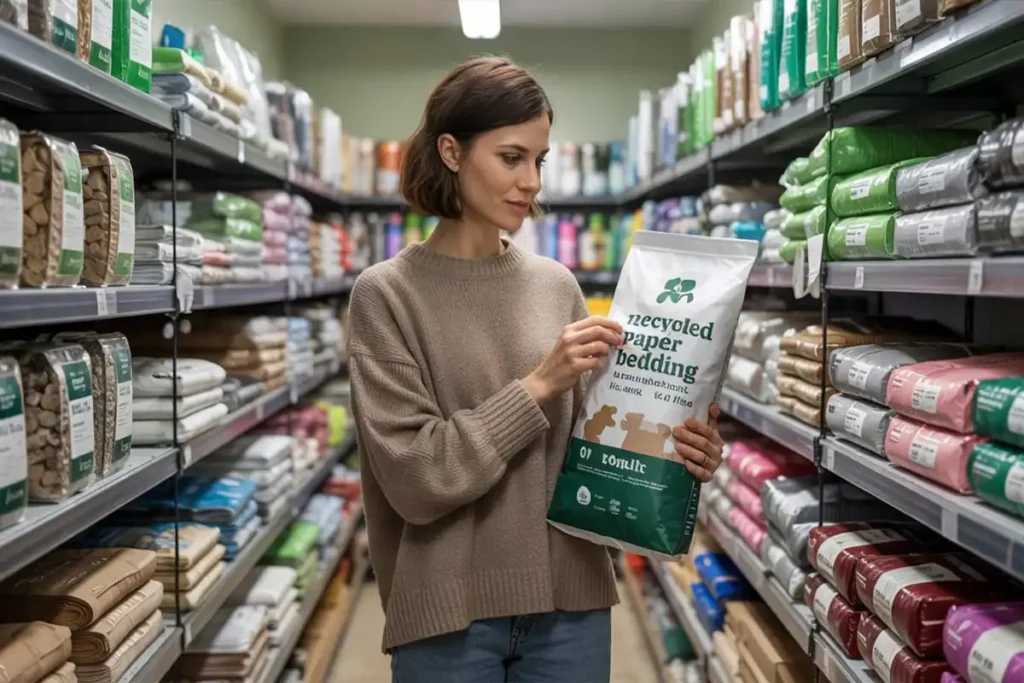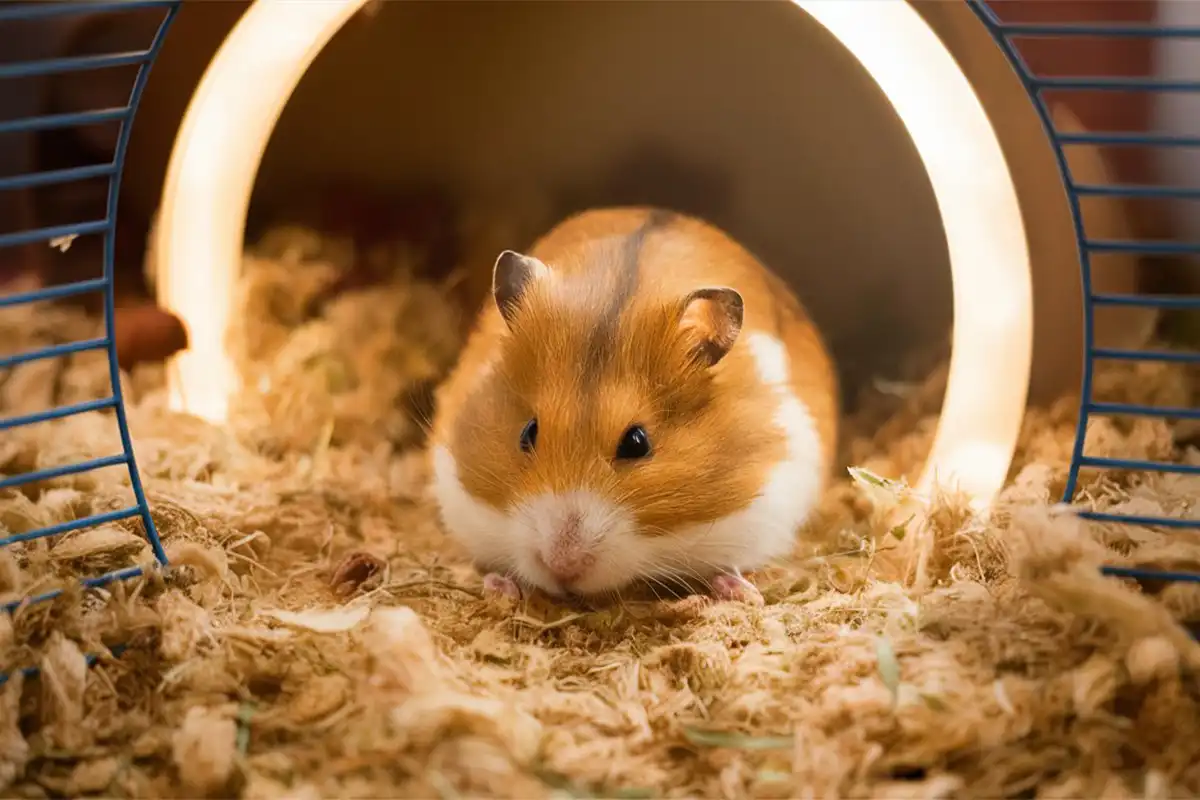Choosing the right small pet bedding makes a world of difference when it comes to your furry friend’s comfort, health, and happiness. Whether you care for a curious hamster, a cuddly guinea pig, or a playful rabbit, the bedding you use shapes their everyday experience. It keeps their environment cozy, controls odors, absorbs moisture, and helps prevent health issues like respiratory problems or skin irritation.
Many pet owners feel overwhelmed by the variety of options—paper, aspen, fleece, and more—but finding the perfect fit doesn’t have to be complicated. In this post, you’ll discover everything you need to know about selecting safe, affordable, and cozy bedding that suits your pet’s specific needs. We’ll explore the best bedding materials, creative setup ideas, cleaning tips, and trusted brands to help you build a habitat your pet will love to call home.
Why the Right Small Pet Bedding Matters
The Link Between Pet Health and Comfort
Your pet’s bedding does more than line the bottom of a cage—it directly impacts their well-being. When you choose high-quality small pet bedding, you create a soft, supportive surface that protects delicate feet, reduces stress, and encourages natural nesting behavior. Animals like hamsters, guinea pigs, and rabbits spend most of their lives in their enclosures, so the environment you create shapes their physical and emotional health. Poor bedding can cause sores, respiratory irritation, or behavioral issues. But soft, clean bedding supports restful sleep and safe exploration. If your pet seems anxious, restless, or uncomfortable, their bedding might be the reason. Prioritizing health and comfort starts with understanding your pet’s needs and choosing bedding that supports their daily lifestyle.
How Bedding Affects Hygiene and Odor Control
Bedding plays a huge role in keeping your pet’s habitat clean and odor-free. Choosing the right small pet bedding helps absorb moisture quickly, keeping urine and droppings from soaking into the base of the cage. This minimizes the growth of bacteria and reduces the risk of illness. It also helps prevent your home from developing unpleasant smells, which can happen quickly if bedding doesn’t offer proper odor control. Look for bedding specifically designed to lock in moisture and neutralize odors. Clean, dry bedding not only protects your pet from skin irritation and infections but also makes your cleaning routine more manageable. A well-maintained habitat starts with bedding that works hard to keep things fresh between full cleanings.
Importance of Dust-Free Bedding for Respiratory Health
Tiny particles from low-quality bedding can affect your pet’s breathing, especially in small animals with sensitive respiratory systems. Using dust-free small pet bedding significantly reduces airborne particles that can irritate the lungs, eyes, and nose. Rabbits and guinea pigs, in particular, are prone to respiratory issues if exposed to dusty materials. Inhaling dust over time can lead to chronic coughing, sneezing, and even serious infections. Dust-free options, like high-quality paper bedding or properly processed aspen, create a cleaner air environment inside the cage. You may not see the dust, but your pet feels it with every breath. Protecting their respiratory health starts with choosing safe, low-dust materials that promote fresh airflow and a healthier overall habitat.
Creating a Cozy, Safe Space for Relaxation and Sleep
Small animals need comfort and security to thrive, and bedding plays a big role in meeting those needs. With the right small pet bedding, you can transform a plain cage into a cozy, inviting home. Soft materials cushion their bodies as they rest, and the right bedding encourages natural burrowing, tunneling, and nesting behavior. When your pet feels safe and warm, they relax more easily and sleep better, which supports their mood and immune system. Creating a cozy space also means paying attention to bedding placement and depth—layer it thick enough for comfort but not so deep that it traps moisture. A comfortable environment keeps your pet calm, reduces stress, and builds a better bond between you and your furry friend.
Popular Small Animal Bedding Options (Pros & Cons)
Paper Bedding – Soft, Absorbent, and Eco-Friendly
Many people with small pets choose paper bedding. There are good reasons why. This type of small pet bedding offers exceptional absorbency, helping to soak up moisture and control odors naturally. It’s also incredibly soft, which makes it perfect for sensitive animals like hamsters, guinea pigs, and rabbits. Because many brands use recycled, biodegradable paper, this option also supports eco-conscious pet care. Paper bedding is virtually dust-free, making it a smart choice for pets with respiratory sensitivities. Brands like Carefresh and Kaytee Clean & Cozy consistently rank high among pet owners for quality and safety. If you want bedding that keeps your pet dry, comfy, and protected while being kind to the planet, paper bedding checks every box.

Aspen Shavings – Natural and Affordable
It provides a natural, chemical-free option for pet owners looking for cost-effective small pet bedding. Unlike pine or cedar, aspen doesn’t contain harmful aromatic oils that can irritate your pet’s skin or lungs. It’s a great choice for those who want a wood-based bedding with solid odor control and decent absorbency. Aspen is also widely available and usually priced lower than specialty bedding types, making it a budget-friendly option without sacrificing safety. While it’s not as soft as fleece or paper, many small animals enjoy the natural texture. It works well for hamsters and guinea pigs that like to burrow or dig. If you’re after a straightforward, all-natural bedding solution, aspen shavings offer a reliable and affordable alternative.
Fleece Liners – Reusable and Budget-Friendly in the Long Term
Fleece liners offer a washable, reusable solution that saves money over time while keeping your pet’s environment soft and stylish. As a small pet bedding choice, fleece is especially popular among guinea pig and rabbit owners. It provides a cozy surface for lounging and is gentle on paws. When paired with an absorbent layer underneath, fleece does a great job of keeping pets dry. Since you can wash and reuse fleece, it reduces waste and ongoing bedding costs. It also comes in a variety of colors and patterns, making it easy to personalize your pet’s habitat. Although fleece requires more maintenance than disposable options, many pet owners find the long-term savings and comfort benefits well worth the effort.
Best Bedding Picks for Rabbits, Hamsters, and Guinea Pigs
Different pets have different bedding needs, and choosing the best small pet bedding for your specific animal helps ensure their comfort and safety. Rabbits tend to do well with fleece liners, as they provide a soft surface and are easy to clean in larger enclosures. Guinea pigs also love fleece, but many owners use paper bedding in litter areas for better absorbency. Hamsters usually prefer paper bedding or aspen shavings, both of which allow for burrowing and nesting. The key is to consider your pet’s habits—do they dig, chew, or sleep in one spot? Choose bedding that matches their behavior and body size. By tailoring your choice to each species, you create a habitat that feels like home.
Cozy Pet Bedding Ideas for Every Small Pet
Soft Bedding for Hamsters and Guinea Pigs
Hamsters and guinea pigs thrive in warm, soft environments, so providing cushioned small pet bedding is essential for their comfort and health. Hamsters love to burrow, so opt for fluffy paper bedding that holds shape and allows them to tunnel and create cozy nests. Guinea pigs prefer smooth, gentle surfaces that won’t irritate their sensitive feet, making fleece liners a popular choice. Avoid rough or overly firm materials that can cause sores or discomfort. Layer the bedding thick enough to support natural behaviors, but not so deep that it creates dampness. Add hideouts or tunnels for extra coziness, and keep their sleeping area separate from feeding zones. Thoughtfully chosen soft bedding can help reduce stress and promote better rest for both animals.

Bedding Setups for Rabbits Who Love to Lounge
Rabbits love lounging, stretching out, and even flopping down dramatically when they feel safe and relaxed. To support this natural behavior, use small pet bedding that combines softness, space, and cleanliness. Fleece liners on top of an absorbent pad provide a cushy, dry surface perfect for long naps. Place the bedding across larger areas of their enclosure so your rabbit has plenty of room to sprawl. Consider using paper bedding in litter boxes to keep things tidy while maintaining comfort in sleeping zones. Avoid overcrowding the habitat with accessories that take up valuable floor space. A calm, open layout with soft, clean bedding encourages your rabbit to relax fully and enjoy their environment without stress or discomfort.
Creative Touches for a Warm and Inviting Pet Habitat Setup
Creating a cozy and engaging space starts with more than just the right small pet bedding—it also includes layout, enrichment, and atmosphere. Make separate areas with the bedding: one for sleeping, one for playing, and one for eating. Add tunnels, hideouts, and chew-safe toys directly on top of soft bedding to encourage exploration and activity. Choose bedding colors and textures that complement your pet’s environment and offer visual warmth. Make sure the bedding fills the entire base of the enclosure to prevent cold or hard spots. Scatter a few hay piles or soft nesting materials in corners to give your pet more control over their space. These small, creative adjustments help transform a basic cage into a warm, personalized retreat that your pet will love.
Incorporating Eco-Friendly Pet Bedding for Sustainability
Choosing small pet bedding that’s eco-friendly allows you to care for your pet and the planet at the same time. Many brands now offer biodegradable paper bedding made from recycled materials that break down naturally after disposal. Fleece liners also support sustainable habits since you can wash and reuse them for years instead of constantly throwing bedding away. When shopping, look for packaging made from recycled content and bedding free from synthetic dyes or perfumes. Some companies even use sustainable manufacturing processes or give back to environmental causes. By switching to eco-friendly options, you reduce your pet’s ecological footprint without sacrificing comfort or cleanliness. It’s a small change that makes a big impact—both in your home and beyond.
How to Choose Pet Bedding: Tips for Pet Owners
How to Choose Pet Bedding
Choosing the right small pet bedding starts with understanding your pet’s unique needs. Consider their species, size, and habits. Hamsters and gerbils love to dig, so deep, moldable bedding works best. Guinea pigs need soft, flat bedding to protect sensitive feet. Rabbits benefit from a combination of cushioned resting areas and absorbent litter sections. Also think about your lifestyle—some materials require daily upkeep, while others offer convenience with less maintenance. Check for key features like dust-free formulas, odor control, and non-toxic materials. Read product labels and reviews before making a decision. When you match your pet’s behavior with the right type of bedding, you create a cleaner, more comfortable environment they can thrive in every day.

Finding Affordable Pet Bedding Solutions
Providing comfort for your pet doesn’t have to drain your budget. Many small pet bedding options are both affordable and effective if you know where to look. Paper bedding often comes in bulk sizes that lower the cost per use, while aspen shavings offer a natural, low-cost alternative with reliable absorbency. Fleece liners require an upfront investment but save money over time through reuse. Watch for sales at pet stores or sign up for brand newsletters to get discounts on trusted names like Carefresh or Small Pet Select. You can also mix bedding types—use fleece in lounging zones and paper in litter areas—to stretch your budget without compromising comfort. Affordable choices exist for every pet parent; it’s all about being resourceful.
Pros and Cons of Disposable vs. Reusable Options
When choosing small pet bedding, you’ll often decide between disposable and reusable options. Disposable bedding, like paper or wood shavings, offers convenience—just remove and replace. It’s ideal for quick cleanups and excellent odor control, but it can get costly over time and produces more waste. Reusable bedding, like fleece liners, offers a long-term solution that saves money and reduces environmental impact. However, it requires frequent washing and proper layering with absorbent materials underneath. The best choice depends on your time, budget, and pet’s needs. Some owners even combine both—using fleece in main areas and disposable bedding in litter boxes. Understanding the trade-offs helps you maintain a clean, comfortable habitat while balancing effort and expense.
Sizing Bedding to Fit Cages and Reduce Waste
Properly sizing small pet bedding for your pet’s cage prevents mess, reduces waste, and makes cleaning much easier. Measure the floor space of your pet’s enclosure before purchasing bedding to ensure full coverage without overstuffing. If you use fleece liners, cut them to fit precisely and pair with absorbent pads underneath. For disposable bedding, add enough depth for digging or comfort—typically 2–4 inches for most small animals. Don’t overfill, as excess bedding can become wet, soiled, or kicked out. Efficient sizing also helps your bedding last longer between changes, saving money and reducing your environmental footprint. A well-fitted bedding setup not only looks neater but also supports your pet’s natural behaviors and hygiene.
Pet Cage Bedding Tips & Cleaning Best Practices
Pet-Safe Cleaning Practices to Maintain Hygiene
Keeping your pet’s environment clean is just as important as choosing the right small pet bedding. Use gentle, non-toxic cleaners that won’t leave harmful residues behind. Every day, take out old food, wet areas, and poop. This keeps the bedding clean. During full cleanings, take your pet out of the cage and wipe down all surfaces with a pet-safe disinfectant. Rinse thoroughly and allow everything to dry before adding new bedding. Always wash your hands before and after handling bedding or cleaning supplies. Avoid using harsh household chemicals, as their fumes and residues can harm your pet’s respiratory system. Clean cages on a consistent schedule, and use high-quality bedding to help maintain a fresh, healthy space between cleanings.

When and How to Change Bedding
Your pet’s health depends on how often you refresh their bedding. Monitor your small pet bedding daily to check for moisture, odors, or buildup. Spot-clean areas soiled by urine or droppings each day to reduce bacteria and keep the enclosure comfortable. Perform a full bedding change at least once a week—more often if you notice strong smells or if your pet is ill. Remove all used bedding, wipe down the cage, and replace it with a fresh, dry layer. If you’re using fleece liners, wash them in fragrance-free detergent and make sure they’re fully dry before reusing. Staying consistent with changes prevents odor buildup and supports your pet’s comfort and cleanliness at all times.
Tips for Preventing Odors with Odor Control Bedding
Strong odors often come from trapped moisture and bacteria, so choosing odor-controlling small pet bedding makes a big difference. Look for bedding labeled as “odor control” or “high absorbency.” Paper-based options with baking soda or natural odor blockers help neutralize smells without irritating your pet’s nose. Change wet spots daily and avoid overloading the cage with too much bedding, which can trap waste. Add a litter box for larger pets like rabbits or guinea pigs to localize messes and make clean-up easier. Proper ventilation in the cage area also helps minimize smells. With the right combination of odor-control bedding, regular cleaning, and smart cage setup, you can keep your pet’s home fresh and pleasant at all times.
Trusted Bedding Brands for Safety and Comfort
Not all bedding brands offer the same quality, so it’s important to choose small pet bedding from trusted names that prioritize your pet’s safety. Brands like Carefresh, Kaytee, and Small Pet Select consistently receive high marks from pet owners for their dust-free, absorbent, and non-toxic materials. Carefresh offers soft paper bedding that’s great for odor control. Kaytee’s Clean & Cozy bedding is a good price and works very well. Small Pet Select uses premium, eco-friendly materials in both paper and aspen bedding products. These brands invest in safety testing and use processes that ensure your pet’s respiratory and skin health are protected. By sticking to reputable products, you give your small animal the safest, coziest environment possible.
Conclusion
Picking the right bedding is very important for how comfortable, healthy, and happy your pet is. Whether you care for a hamster, guinea pig, or rabbit, your bedding choice shapes their daily environment—from where they sleep to where they play and relax. You don’t just line a cage with soft material; you create a warm, safe space where your furry companion can thrive.
Focus on the qualities that matter most: softness, absorbency, odor control, dust-free composition, and safety. High-quality small pet bedding supports respiratory health, reduces stress, and keeps your pet dry and cozy between cleanings. Think beyond just price—choose materials that suit your pet’s species, behavior, and daily needs. Paper bedding, aspen shavings, and fleece liners all offer different advantages, and many owners find success by combining them.
By exploring affordable options, understanding proper cleaning routines, and investing in trusted brands, you give your pet a space that’s more than just a cage—it becomes a home. The effort you put into selecting the right small pet bedding pays off in your pet’s improved well-being, cleaner living space, and stronger bond with you.
Make bedding a priority in your pet care routine, and you’ll see the difference in how your little friend rests, plays, and interacts. When you choose wisely, you don’t just provide bedding—you offer love, comfort, and safety in every corner of their habitat.
Discover more about Pet Bedding in this Article.
Read More about Pet bedding paper in this Article.
Discover More about Pets From Here.
Pick Some Good Stuff For your Pet on PetMD Official

2 thoughts on “Small Pet Bedding You’ll Love: How to Keep Your Furry pet Cozy?”
Comments are closed.